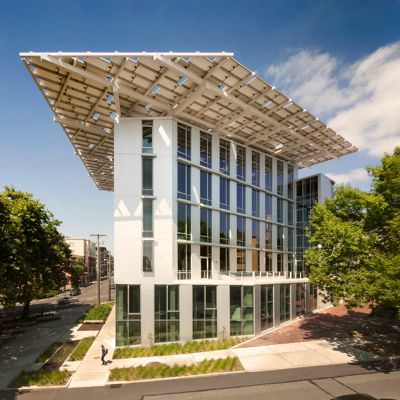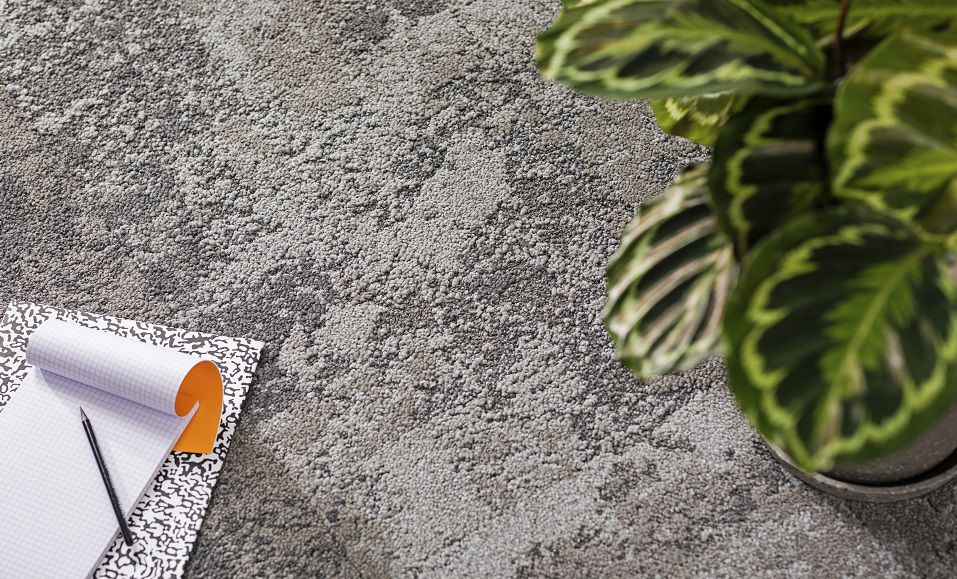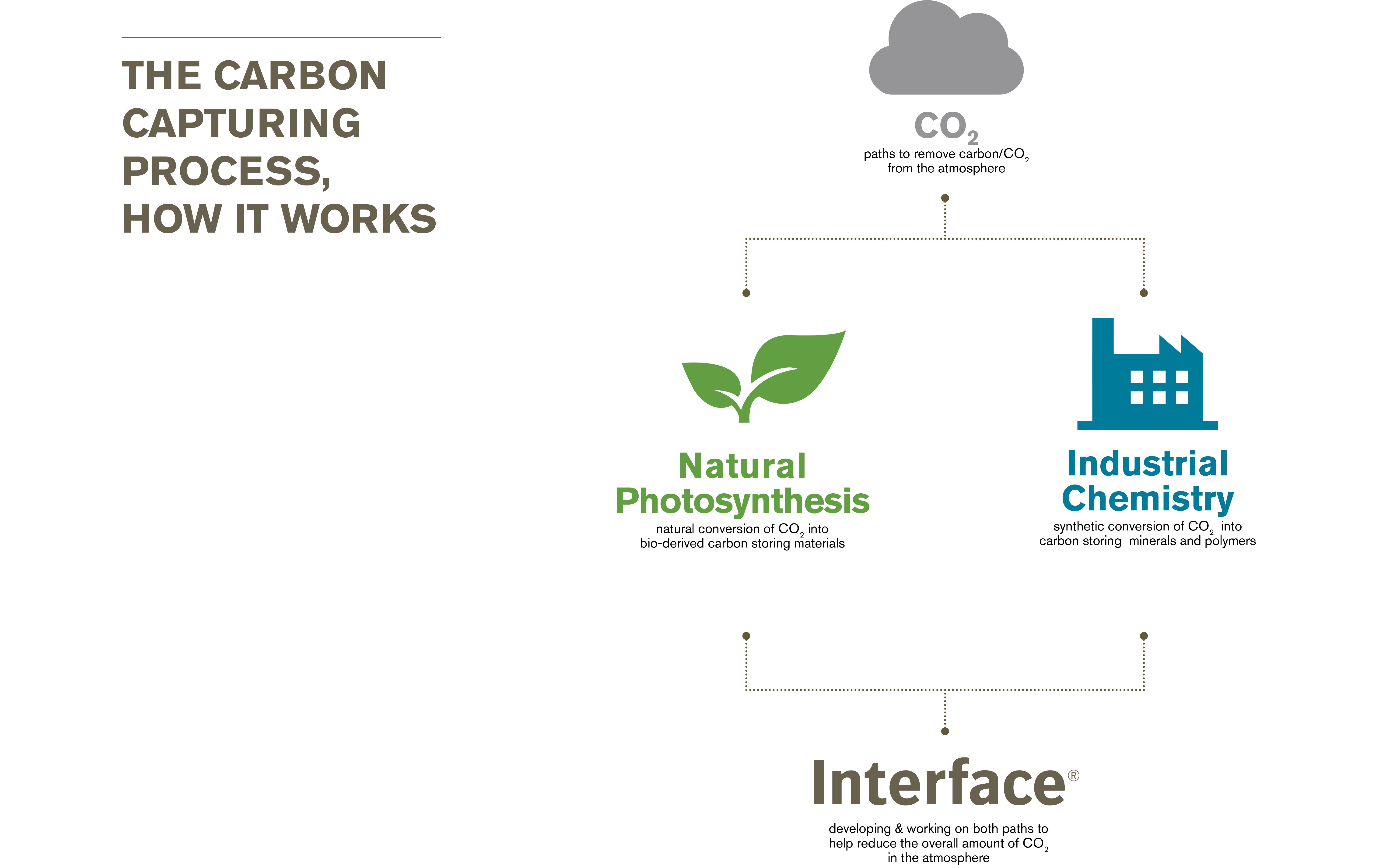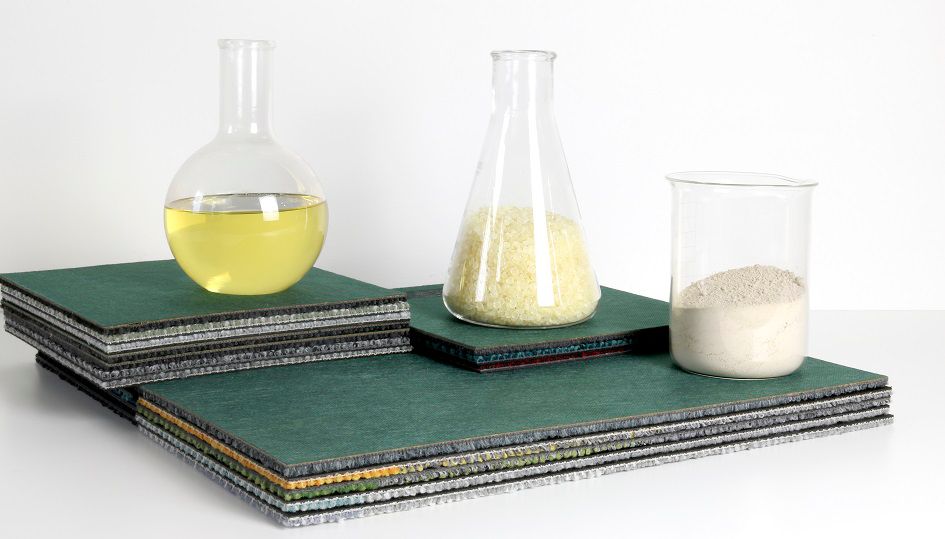Can a built space not only have a positive impact on those who occupy it, but also on the environment outside the building? We believe the answer is yes.
Buildings of the past simply focused on the function and aesthetics of a space. As construction processes evolved, it became apparent that some of the development, design and product choices were having a negative impact on the environment (and in many cases, the well-being of those occupying the space). This led to the development of green building practices, with the aim to reduce the environmental impact of buildings. Buildings account for a large amount of land use, energy and water consumption, and air and atmosphere alteration. According to the Environmental Protection Agency (EPA), reducing the amount of natural resources buildings consume and the amount of pollution given off is seen as crucial for future sustainability.
Today, we’re taking an even stronger position toward protecting the environment. Sustainability efforts should be about more than just minimising our negative impact, but exploring how to actually have a positive impact on our planet.
Why it matters
According to NASA: On Earth, human activities are changing the natural greenhouse. Over the last century, the burning of fossil fuels like coal and oil has increased the concentration of atmospheric carbon dioxide (CO2). Under the supervision of the United Nations, the Intergovernmental Panel on Climate Change (a group of 1,300 independent scientific experts from countries all over the world) concluded that industrial activities have raised atmospheric carbon dioxide levels from 280 parts per million to 400 parts per million in the last 150 years. The panel also concluded there’s a better than 95 percent probability that human-produced greenhouse gases such as carbon dioxide, methane and nitrous oxide have caused much of the observed increase in Earth’s temperatures over the past 50 years.
Specifying carbon-responsible materials and processes
While cars and industry are the most obvious sources of carbon emissions, the built environment is a major contributor. According to the International Energy Association, two trillion square feet of new and rebuilt buildings will be constructed in cities worldwide over the next 35 years. To put this in perspective, humans are building the city of New York every 35 days over that amount of time. Buildings contribute to 40 percent of all annual CO2 emissions, and they consume huge amounts of electricity (for lighting, heating/cooling, security, etc.) – in fact, 75 percent of all electricity produced in the United States goes toward keeping buildings operational. For any building it’s not just electricity usage that adds to carbon emissions, but also the materials and processes used to create them. So, reducing this embodied carbon is the most urgent challenge of all.
Global warming affects all of us. And while it’s a major concern for many businesses and individuals, sometimes it’s difficult to know how to have a positive impact. At Interface, one positive step in the climate change direction is our Carbon Neutral Floors™ programme, which helps our customers lower the carbon footprints of the spaces they design.
All Interface products are now carbon neutral across the entire product lifecycle. In 2018, we estimate that we will offset 400,000 metric tonnes of carbon emissions as part of the Carbon Neutral Floors programme, equivalent to the carbon absorbed annually by nearly half a million acres of forest. That’s two-thirds of Yosemite National Park in California or two times the size of New York City.
Taking a holistic approach to carbon neutrality, we address all stages of the product’s life cycle, beginning with the raw materials we use through to manufacturing, transportation, maintenance and ultimately end-of-life product take-back. Because Interface has already reduced the carbon footprint of our products to the lowest levels in the industry, it is economically viable – and more importantly, environmentally responsible – to achieve carbon neutrality through the supply chain of the products and the purchase of carbon offsets.
Through the Carbon Neutral Floors programme, we can provide information to each customer to help them understand the carbon impact of their purchase. For each flooring purchase, we can calculate the estimated carbon reductions and present that documentation to the customer at the project. For example, for every 1,000 sq. metres of Interface flooring sold, the company will offset carbon emissions equivalent to a car travelling 25,000 miles, or one trip around the Earth.
“Architects and designers, flooring contractors and end users are beginning to see that their decisions – the products they specify and buy – have a direct impact on our climate. By specifying Interface products, they can do their part to address embodied carbon. And, we need to work together to elevate embodied carbon as an opportunity and to shine a light on those that are taking the lead. Now with every purchase, our customers are joining us in this important endeavor,” said Interface Chief Sustainability Officer Erin Meezan.
And Interface is also joining forces with Gensler as part of MaterialsCAN (the Materials Carbon Action Network), a diverse collaborative dedicated to reducing the embodied carbon footprint of our built environment. Recognising that the carbon burden associated with the tonnes of materials going into building and urbanisation projects is immense, Gensler is focusing on opportunities to turn this around and drive carbon out of building materials.
The Living Building Challenge
So, it’s clear we’re not the only ones asking how built environments can help create a healthier planet. The International Living Future Institute has posed the question: “What if every single act of design and construction made the world a better place?”
- In response to this question, the organisation has developed The Living Building Challenge, a rigorous proven performance standard for buildings. People from around the world use this regenerative design framework to create spaces that give more than they take. Living Buildings are:
- Regenerative buildings that connect occupants to light, air, food, nature, and community.
- Self-sufficient and remain within the resource limits of their site.
- Create a positive impact on the human and natural systems that interact with them.
The Bullitt Center, in Seattle, Washington, became the first office building to earn Living Building certification, in April 2015. Located on a site that was a forest filled with Douglas fir trees before European settlement, the building was designed by the Seattle-based Miller Hull Partnership to function as a tree would. “Not only does it provide shelter and sustenance for its users, like a tree would for deer, elk, birds, and squirrels, it also produces its own energy from the sun and rain, it doesn’t produce toxins, and it recycles its waste as nutrients,” according to Bullitt Foundation President Denis Hays. The 52,000 square-foot, six story building, which is owned by the Bullitt Foundation, stands as a shining example of the accomplishments the Foundation has achieved in their quest to remain at the forefront of the sustainability movement.

The Bullitt Center stands as a shining example of the accomplishments the Foundation has achieved in its quest to remain at the forefront of the sustainability movement. Photograph ©Nic Lehoux
LEEDing the charge
Since its inception in 1993, the U.S. Green Building Council (USGBC) has been working to mitigate the effects of climate change through green building. USGBC’s LEED rating system helps achieve buildings, neighbourhoods and even cities that use less energy and fewer resources and have a lower carbon footprint. More than 2.4 million square feet is LEED certified every day, with more than 94,000 projects using LEED. And it’s in more than 165 countries and territories.
Through specific, credit-based strategies and rigorous standards, LEED guides builders and occupants alike to structures they can be proud of, structures that add as little as possible to our world’s greenhouse gas emissions and water and energy use. Of the 100 total points in LEED v4, 35 reward climate change mitigation strategies. These include four different greenhouse gas emissions reduction credits, as well as credits for sustainable site location, access to public transportation, water use, energy performance, carbon offsets and life cycle impact reduction.
Journey toward a climate fit for life
In the context of our take – make – waste manufacturing business, Interface has taken a hard look at what it means to run a business sustainably. We asked ourselves: If nature designed an industrial process, what might it look like? The fundamentals of nature became guides for how to run our business – using renewable energy, fitting form to function, recycling everything, creating no waste. Using these lessons, we set similar goals for our business, to run on renewable energy, to eliminate waste from our operations, to recycle and then reuse the materials from our products.
On average, approximately 70 percent of a material’s carbon footprint is attributed to raw material extraction and processing. So, in order to impact our total carbon footprint, Interface has looked at how to redesign our products to promote a healthier planet. In the case of our Proof Positive prototype tile, we’re accomplishing this goal by incorporating natural, plant-derived material throughout the carpet tile to create a product that actually benefits the environment. The plants from which these resources originate have grabbed carbon from the atmosphere – in fact, harvesting the materials does not necessarily entail killing the plants – and that carbon then enters the closed system that Interface has been developing for the last two decades.
We’re also addressing the back of the carpet and how it can impact the carbon released into the atmosphere. Our CircuitBac Green™ backing is created with a mix of a bio-plastic and mineral filler and is the first step in the commercialisation of our Proof Positive prototype tile. The combination includes a bio-based component that provides a carbon-negative alternative to existing backing systems, meaning it absorbs more carbon than it emits during its production. As a result, there is less carbon in the atmosphere.
Our new sustainability mission, Climate Take Back™, challenges us, and others, to contribute to a space that nurtures us all: our planet. At Interface, we’re optimistic about reversing global warming. Together, we’re taking steps to create a climate fit for life and an environment that supports us all. We know it’s possible.We believe we can reverse global warming if we focus on four key areas:
1. Live Zero – Do business in ways that gives back whatever is taken from the Earth.
2. Love Carbon – Stop seeing carbon as the enemy, and start using it as a resource.
3. Let Nature Cool – Support our biosphere’s ability to regulate the climate.
4. Lead Industrial Re-revolution – Transform industry into a force for climate progress.
Be part of the solution
We know we’re not in this journey alone. In a global survey we discovered that 95 percent of climate experts and 91 percent of emerging business leaders also believe we can create a climate fit for life. In the built environment, the challenge is how can we create spaces that not only provide positive experiences for those who use them, but also for the planet as a whole. The solution lies in taking a hard look at the energy usage and processes and products that go into a space, including manufacturing and life cycles. The ultimate question is: How can this space give back more than it takes?


